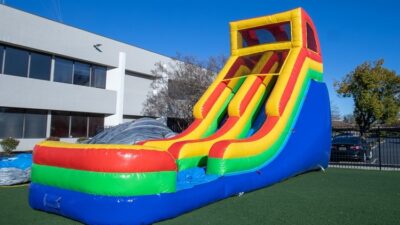The “25 de Nero” Uneven Road Interchange includes the depressed crossing of the Pan Americana Norte, thus eliminating the currently existing traffic lights, allowing continuous traffic on the highway and a roundabout provided with 2 bridges at which level it will receive traffic from the avenues January 25 and October 2,
In addition, the movements of vehicles that leave or enter the highway through the branches of the road interchange. The roundabout will have four lanes of 3.65 meters each. In addition, inclusive pedestrian bridges will be built at the North and South ends for the safe crossing of pedestrians.
Table of Contents
Why is it important to use Safety Barriers on our roads?
40% of road accidents occur due to the lack of control and as a consequence the carelessness of the cars. If there are no safety barriers that contain an out-of-control vehicle, this can cause them to overturn, impact with other vehicles, and pedestrian victims. In any case, the number of fatalities increases considerably.
Therefore, it is essential to implement security elements such as Steel Safety Barriers that vehicles can contain on the road and reduce that alarming figure.
Steel Safety Barriers are an essential and critical part of guaranteeing road safety on our roads, as they contain and redirect vehicles that are out of control, thus reducing risks for occupants and other road users.
Among the factors to take into account are the type of road, its location, the layout, the type of vehicle, the speed limit of the road, the presence of vulnerable structures, the presence of potentially dangerous areas or obstacles next to the roadway.
The different levels of behavior of the Safety Barriers are expressed in:
Containment levels.
The Deformation of the System: characterized by the levels of Working width and Dynamic Deflection.
The Severity of Impact
The different levels of behavior of the security barriers will allow the national authorities to specify which of them should be applied in each case.
Containment levels
There are 10 levels of containment divided into 4 major levels: low, normal, high, and very high containment. For each of them, there are tests or trials carried out to define the characteristics that must exist to use them in a given context. These tests are called “acceptance tests” and indicate the appropriate impact speed, impact angle, vehicle weight, and vehicle type for each of the 10 containment levels.
Being the most used levels of containment normal, high, and very high.
2. The Deformation of the System
The disfigurement of the wellbeing hindrance during the accident test is described by powerful redirection and working width.
It is significant that the distortion is good with the accessible space behind the framework.
On the off chance that, as an outcome of the twisting brought about by the vehicle on the framework, it is preposterous to expect to decide the previously mentioned sidelong position, the most far off horizontal position came to by the vehicle will be utilized to quantify the working width.3. The
Seriousness of Impact
The speeding up seriousness list (ASI) is a capacity that relies upon time and is planned to quantify the impact that vehicle developments during the accident have on an individual situated close to point.
There are 10 degrees of control separated into 4 significant levels: low, typical, high and high regulation. For every one of them there are tests or preliminaries did to characterize the attributes that must exist to utilize them in a given setting. These tests are classified “acknowledgment tests” and demonstrate the suitable effect speed, sway edge, vehicle weight, and vehicle type for every one of the 10 regulation levels. Being the most utilized degrees of regulation typical, high and high.
3. The Severity of Impact
The acceleration severity index (ASI) is a function that depends on time and is intended to measure the influence that vehicle movements during the crash have on a person located near point P.
The theoretical speed of the head (THIV), is a concept developed to evaluate the influence (severity) that a vehicle occupant has when it collides with a containment system.
The occupant is considered a free-moving object (head) that, while the vehicle changes speed during the collision, continues its movement until it hits the interior surface of the vehicle. The magnitude of the theoretical crash speed is considered a measure of the severity of the vehicle-system crash.
Also keep in mind the following
The Steel Safety Barriers must contain and redirect the vehicle without breaking the main longitudinal elements of the system.
No essential part of the barrier should be completely detached or pose an obvious danger to traffic, pedestrians, or personnel working in the area.
The elements of the barrier must not penetrate the passenger compartment. No deformations of the compartment or penetrations into it that may cause serious injuries are allowed.
The ground anchors and the connecting elements between the different parts of the system will behave in accordance with the provisions of the design of the system.















Comments